Monitoring Of The Water Quality In Sierpe River And Caño Island
Water covers approximately 75% of the Earth’s surface and constitutes a wide range of various ecosystems, both freshwater and marine. Marine coastal ecosystems, such as estuaries, mangrove forests or coral reefs are part of a larger well-connected network of biomes and biocenosis that are strongly linked together. Due to their high diversity and productivity, they often provide a vast array of services for humans, besides hosting hundreds of animal and plant species. Unfortunately, aquatic pollution is considered today as a major threat to the health and sustainable development of such ecosystems around the world. And despite the establishment of 17 Sustainable Development Goals by the UN in 2015, with the 14th goal being to “conserve and sustainably use the oceans, seas and marine resources for sustainable development”, protection and restoration of marine coastal ecosystems is still insufficiently studied. In fact, those fragile environments are more and more subject to stress due to human interactions. Degradation of these biospheres comes in many forms, with one of the most common and damaging being the harmful algae blooms, or “red tides”.
A harmful algal bloom is an uncontrolled bloom of colonies of algae (primarily dinoflagellates and diatoms, two classes of phytoplankton) in the sea or in freshwater. These blooms are often coupled with a production of toxins or other harmful chemicals with effects on marine animal populations, as well as humans. In some cases, particularly in marine environments, algae cell pigments color the water, turning it red or brown, hence the commonly used name “red tides”. The two major contributing factors to the formation and growth of algae are temperature and the presence of nutrients such as nitrates and phosphates. Favorable conditions can lead to the rapid growth of phytoplankton eventually causing uncontrolled bloom. Red tides have an impact on the water quality therefore directly affecting the biodiversity of the marine biota (animal and plant life of a specific region). The toxins produced by the algae as well as the depletion of oxygen resulting from the decomposition of the latter can sometimes lead to the formation of a so-called “dead zone”, where if extended on large areas and for a long period of time, neither fishes nor plants can survive. Unfortunately, it is not rare to observe red tide events that last for weeks, notably on the south pacific coast of Costa Rica. It’s also important to note that red tides also have negative effects on various socio-economic sectors such as fisheries, tourism, or even recreational services, which is not to be overlooked considering that a significant part of the local community rely on tourism or fishing as their primary source of income.
Our work at the Marine Conservation and Education Center is obviously fitting in this growing movement of ocean conservation. We’ve been actively developing a study to monitor the water quality in the Térraba River and around Caño Island. Actually, we’ve been observing variations in the quality of these waters for more than 2 years now thanks to repeated water quality measurements performed during our various activities (such as whale monitoring, diving experiences, or marine conservation expeditions).
As previously mentioned, the presence of nutrients such as nitrates and phosphates is the main cause of algae bloom. While they can be found in almost all water bodies, their natural concentration is rather low. In fact, the rise in nitrates and phosphates concentrations in rivers is mainly due to crop fertilizers, sewage, or run-off from animal farms. Moreover, the heavy rains occurring annually in tropical regions tend to wash away these mobile nutrients and can lead to the eventual enrichment of entire water bodies (such as rivers or estuaries) in a process called eutrophication.
We measured the concentration of phosphates in nitrates off the coast of Caño Island for more than 2 years as well as red tides occurrences.
Our mission as a marine conservation and education center is to constantly find new ways to understand the ocean and raise awareness about the ways to protect it. Today, more and more actions are being initiated to encourage the public to participate in scientific research in a new trend called “citizen science”. Here at the MCEC, our goal is to engage the public to take part in our various scientific projects, and that is why we take a great deal of care to keep on doing water quality experiments with everyone that shows interest during our tours, as well as to interact with the local communities and authorities.
Moreover, we are aware that to take this study one step further, we will need to gather more data and develop more robust protocols. We are currently in touch with various organizations or companies that could help us achieve this goal. We must take the time and the energy to keep monitoring the water quality in this incredibly rich and fertile region of Costa Rica to unravel the subtlety of all the processes involved in the formation and growth of red tides. And maybe, one day, we will be able to enjoy the blue clear water of Caño Island forever!
